“Not everything has to shout,” Jan Marie Sessler said to me during a studio visit a couple of years ago. And indeed in her prints, paintings, and sculpture she shows a reticence and delicacy that would seem to belong to a bygone era—if not for the wit and spontaneity that are very much part of a postmodernist impulse toward recycling the past in cunning ways. Her works bring together antique fabrics, the yellowing pages of discarded books, old stamps, rusty bottle caps, and other objects that have made a journey through many different hands over the decades. Yet curiously, for an artist who once seemed destined for a career in production and art direction on movies, there is almost never a hint of Pop imagery in her art.
Sessler grew up near Dayton, OH, where her father was a patent attorney. Her mother sewed, made ceramics, and painted, but the more dramatic life of the artist was lived by her great aunt, who went to the Chicago Art Institute and lived in Paris during the 1920s. (She had a relationship with Bradley Walker Tomlin, who would later make a name for himself as a second-generation Abstract Expressionist). The aunt eventually settled in Rockport, MA, in a house overlooking the ocean, a place Sessler recalls as “absolutely magical.”
Though both these formative influences died when the artist was only 13, and her father urged her toward a degree in international studies at Miami University in Oxford, OH, Sessler got a chance to spend her junior year in France and studied drawing in Cézanne’s hometown of Aix en Provence. “I looked out at Mont Sainte Victoire every day as I walked to and from classes,” she recalls. “And at some point I remember being in a museum and thinking, I want to do this, I want to paint. I didn’t know how or where that would happen, but I knew I would get there somehow.”
“Getting there,” though, definitely meant a circuitous route. Her first job out of college was as assistant to the editor in chief of a magazine called Good Food. Intrigued by the graphic and design ends of publishing, Sessler took some classes at the School of Visual Arts and soon decided she wanted to go to film school. The next stop would have been Los Angeles, but she was on her way to a roommate’s wedding in Puerto Rico when her seat mate, who was en route to direct a commercial for American Airlines, talked her into doing production. She ended up living in St. Thomas for 18 months, waitressing and working on films whenever a project came to town.
When she finally did make it to L.A. Sessler arrived during the outset of the 1988 Hollywood writers’ strike, which ended up costing the industry some $500 million. “It was hard to get my first job,” she recalls, and when she finally did connect it was on a spoof-y movie called Cannibal Women in the Avocado Jungle of Death, featuring a young Bill Maher. She then moved on to TV and other films, but after about four years, having worked her way up to being in charge of studio art departments, she decided she’d had enough. Her boyfriend at the time, a computer animator, got an offer of a job in New England for a year. They packed up the car and drove to Lenox, MA, stopping in Taos, NM, along the way.
Memories of Taos remained, and when she returned to northern New Mexico a year later, she started her education as an artist in earnest, a nearly decade-long process that included private drawing groups and classes in printmaking at the University of New Mexico. Gradually Sessler’s interest shifted from painting in oils to printmaking (mainly monotypes and the process known as chine collé), and from landscape to total abstraction. In 2005, she had a show at the Harwood Museum of works on paper, and three years later won a prestigious Pollock-Krasner Foundation grant.
In recent years, Sessler has been drawn to sculpture, fashioning wily and wry personnages, also from unassuming discards like clothespins, corks, or bits of rusted metal. “I admire the softening and transforming effects of nature on things man-made and the dialogue between the two,” she says. In all her works she takes advantage of chance formal elements—a thread unraveled from a piece of cloth becomes a delicate line or a flattened book cover provides a field of mottled color, and sometimes she adds marks of her own in graphite or ink. Of late, she has also been venturing more and more into photography. “Here, as with my work in chine collé, I am largely drawn to unnoticed mark making and transformation in nature,” she says. “The sand currents I document, along with their gestures, exist only until the next wave comes along and wipes them away. By capturing the image I can preserve and share their accidental beauty.”
Jan Marie Sessler has showed extensively at galleries in the West and Southwest, and her work will be included as part of an international festival of literature, film, and the visual arts in Vienna this September. She is represented by Hulse/Warman Gallery in Taos, NM. More about her can be found at jansessler.com.
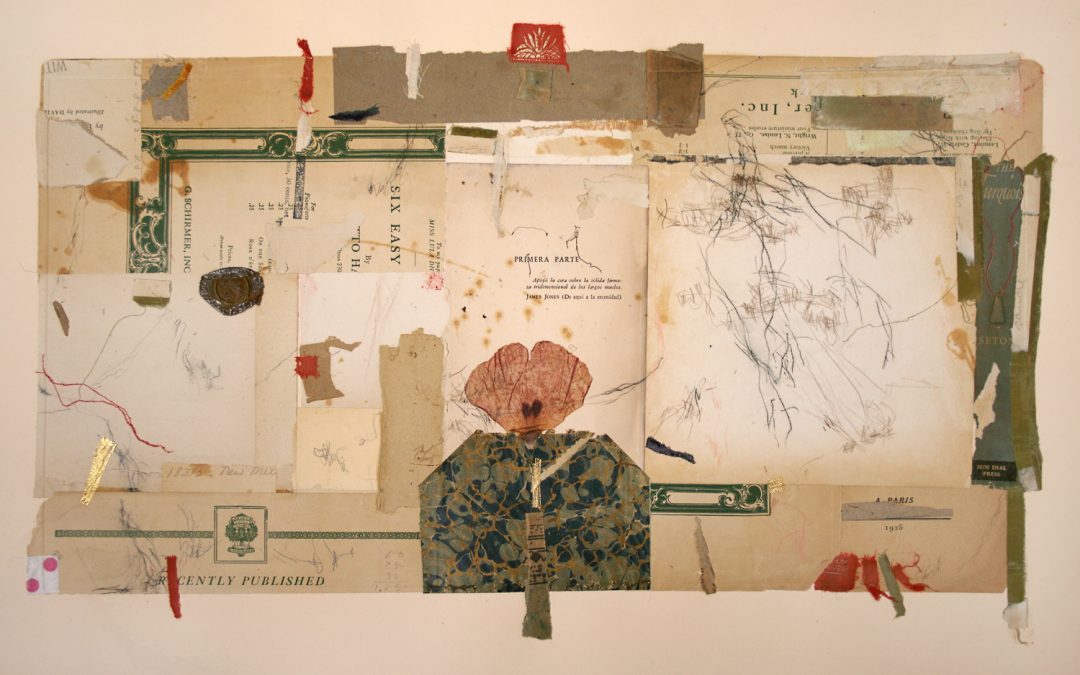
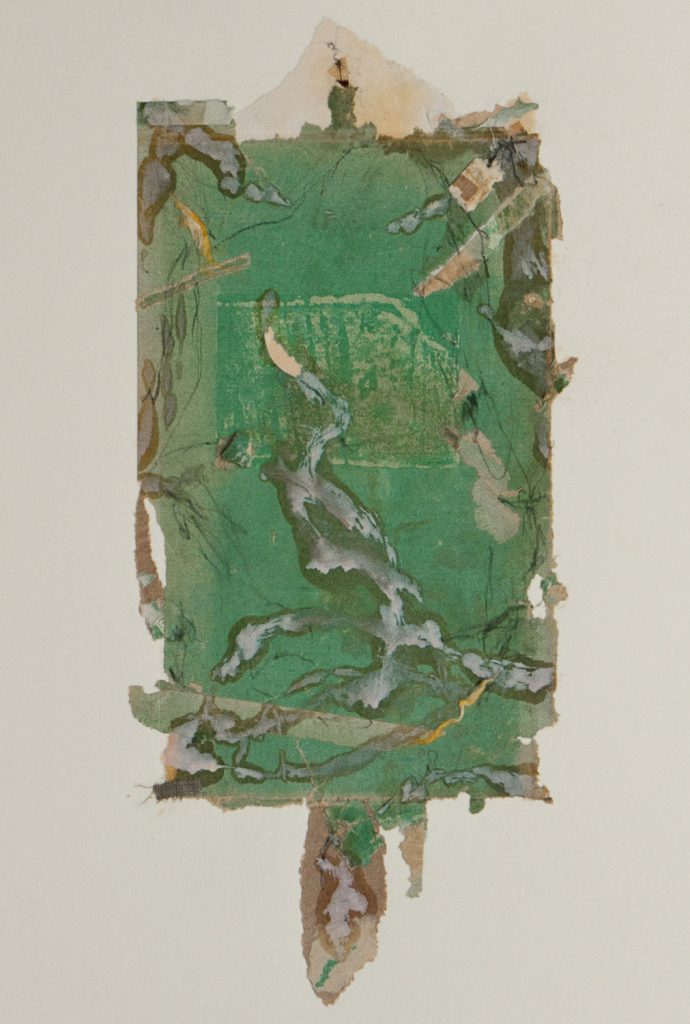
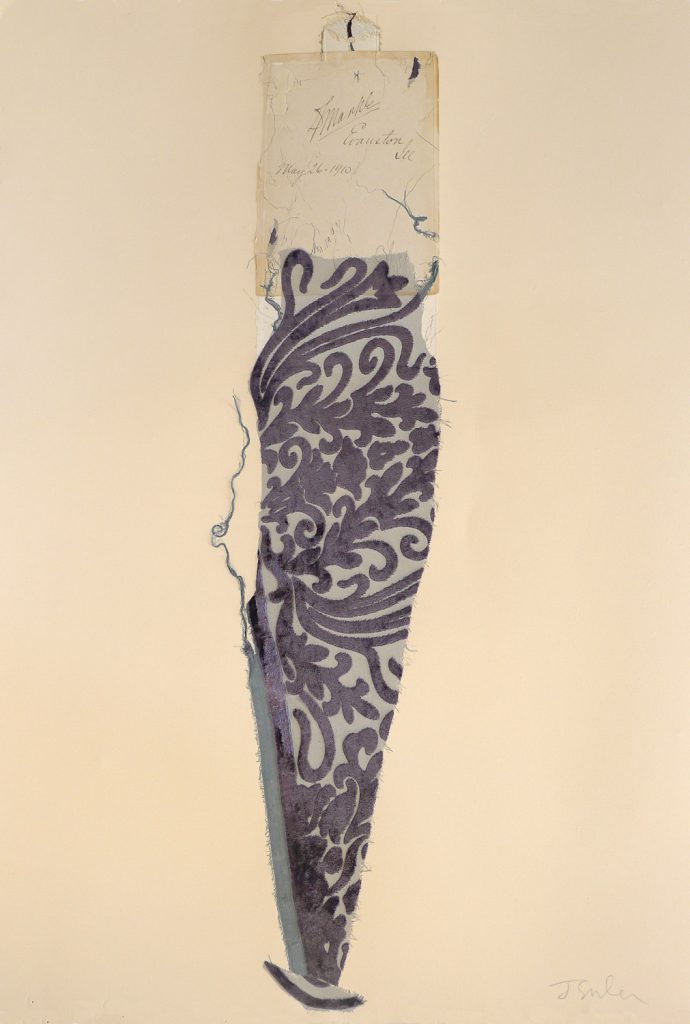
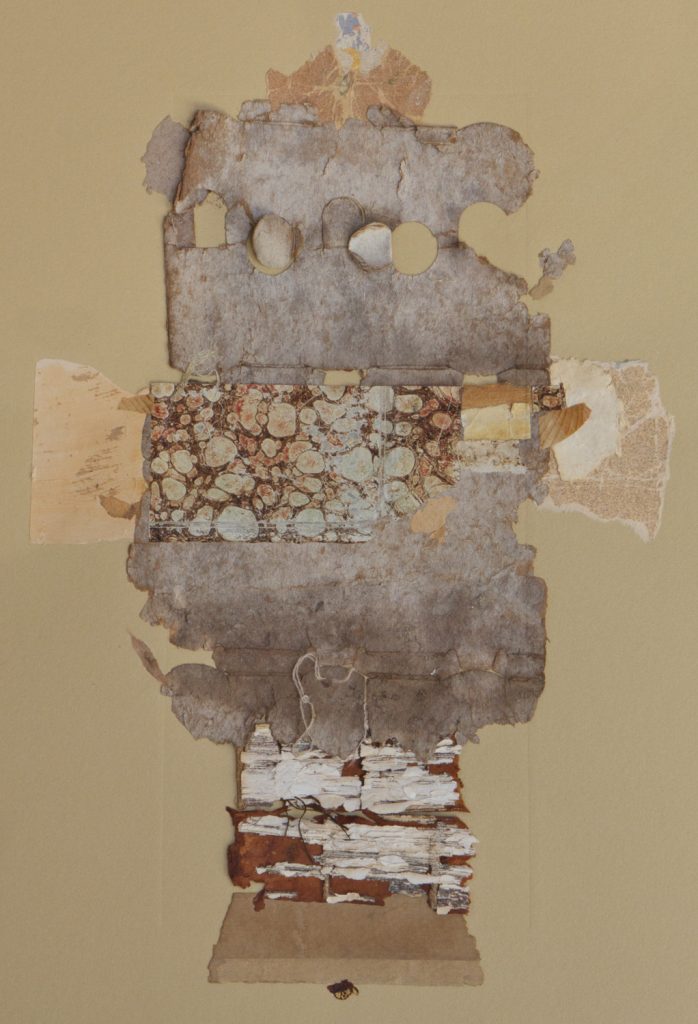
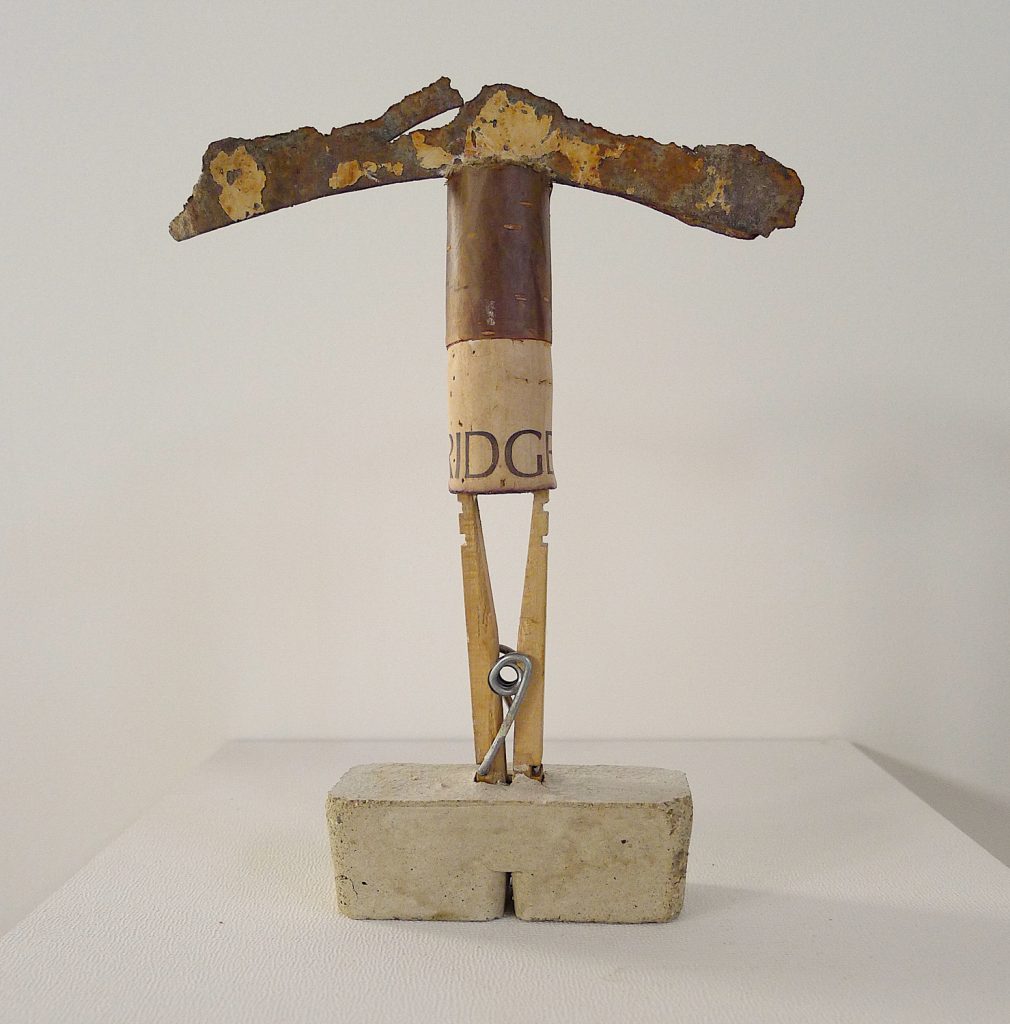
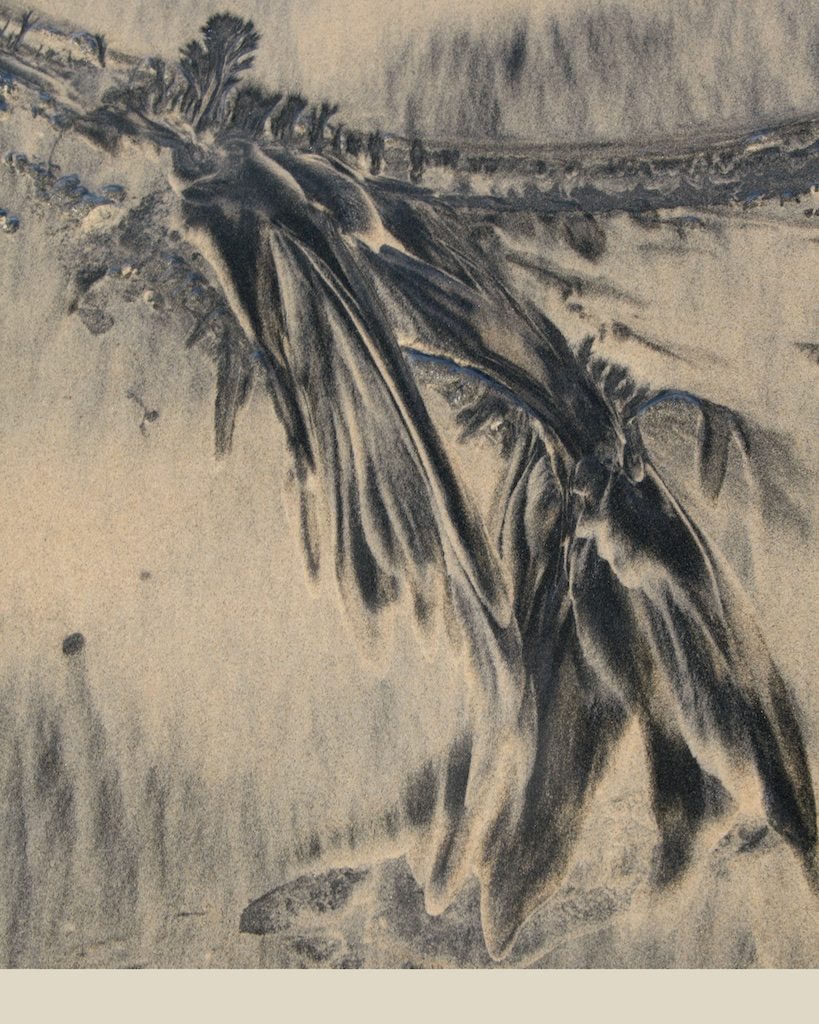
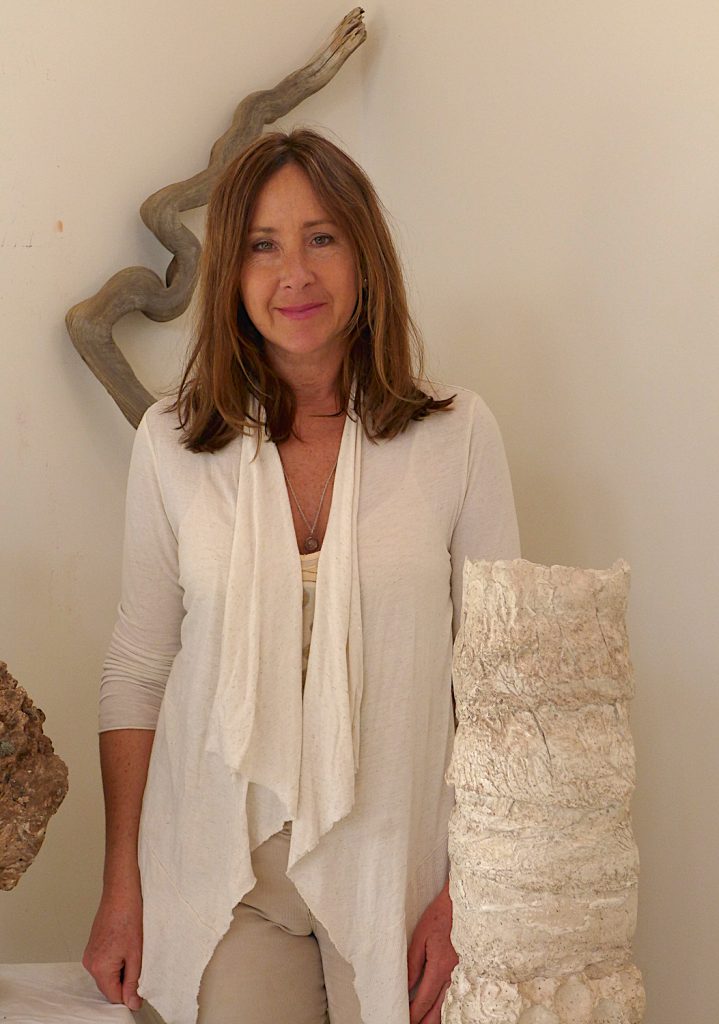
Ann, I have loved Jan’s work for years now. Thank you for this.
Beautiful thoughtful work. Thank you for making me aware of her work.
I am drawn to the subtlety and grace of Jan’s collage work, and thoroughly enjoyed this article.
Jan is a most sensitive artist. You have but to encounter her work, and you “know” her. Her work is very authentic. I love her work, and I love her as well! Thank you so much for featuring her work and telling more about her.
Love Jan’s work
Awesome
brief glimpses of fragile beauties
After reading about the artist, Jan Marie Sessler, I look forward to one day seeing her work in Person. How true, not all works of art have to shout.
Hi Jan,
Wonderful article and thanks for introducing me to this online treasure (not blog!) and I love Ganapati, is it available?
Ann -You have stated this tribute beautifully –
Jan’s creative pieces are uniquely beautiful – thanks much
Frank Purcell